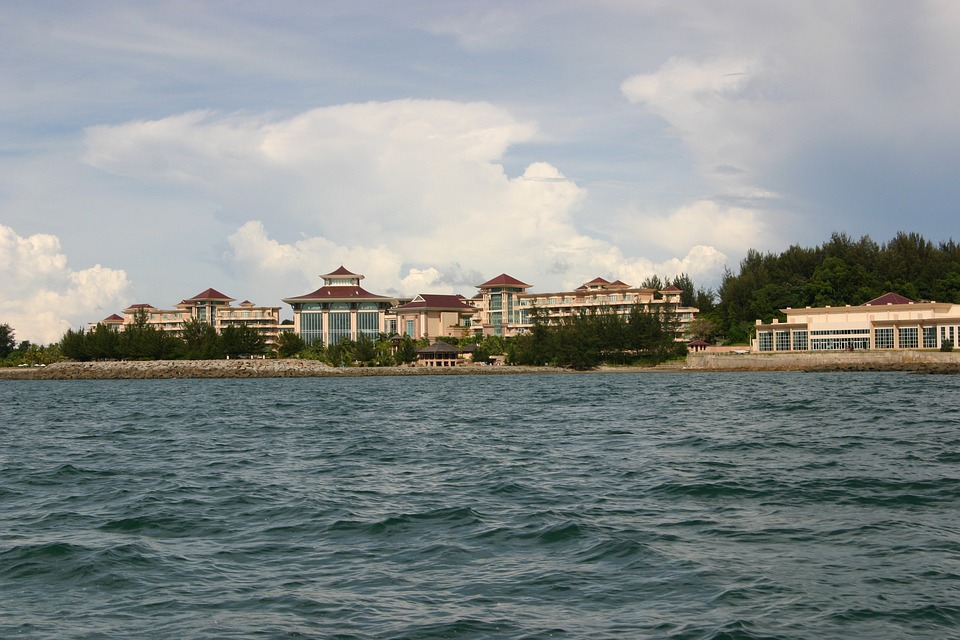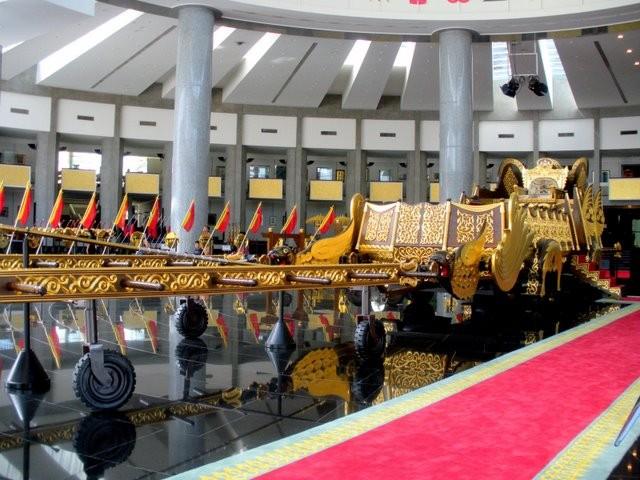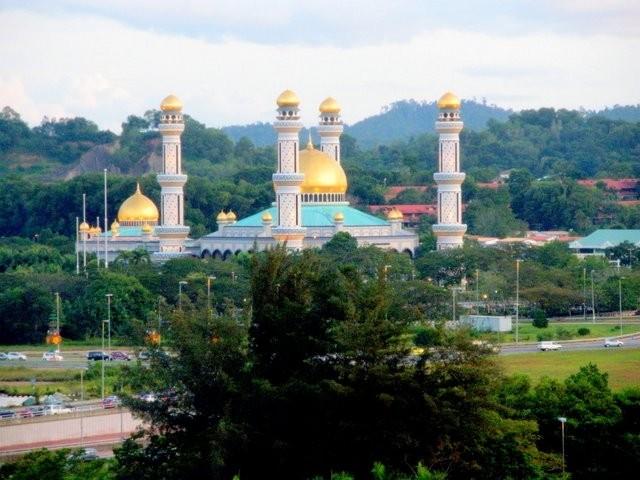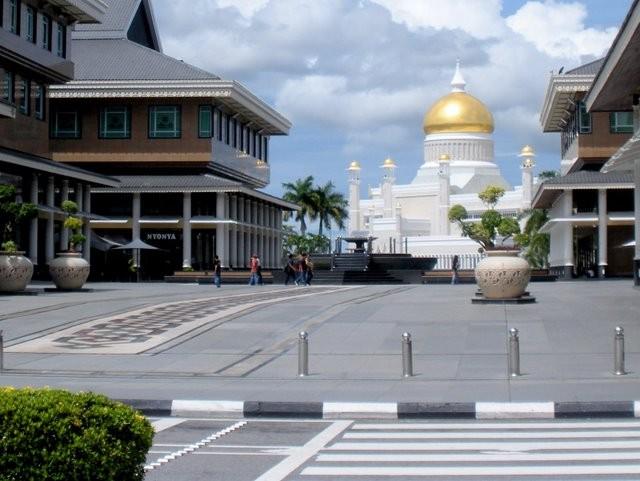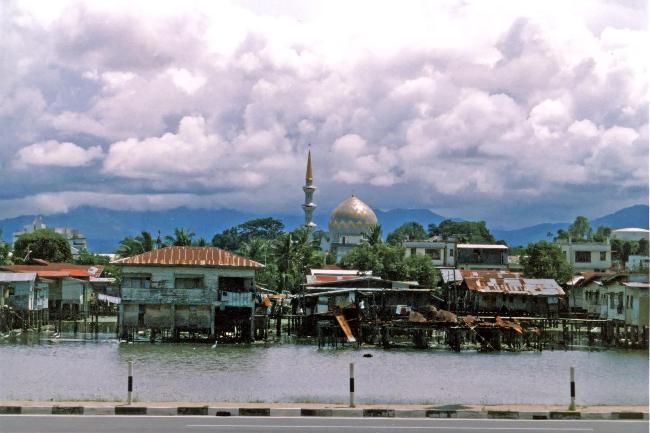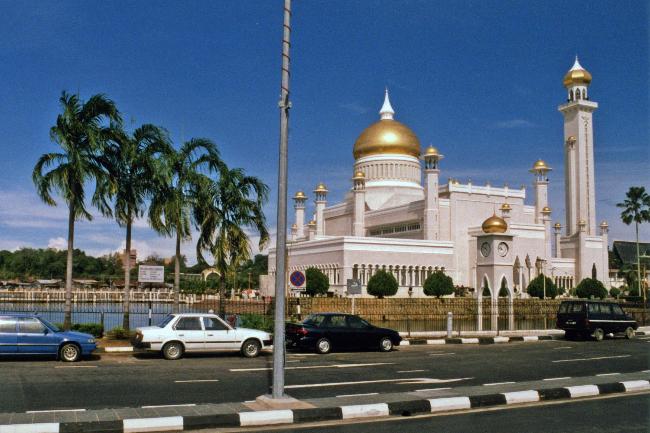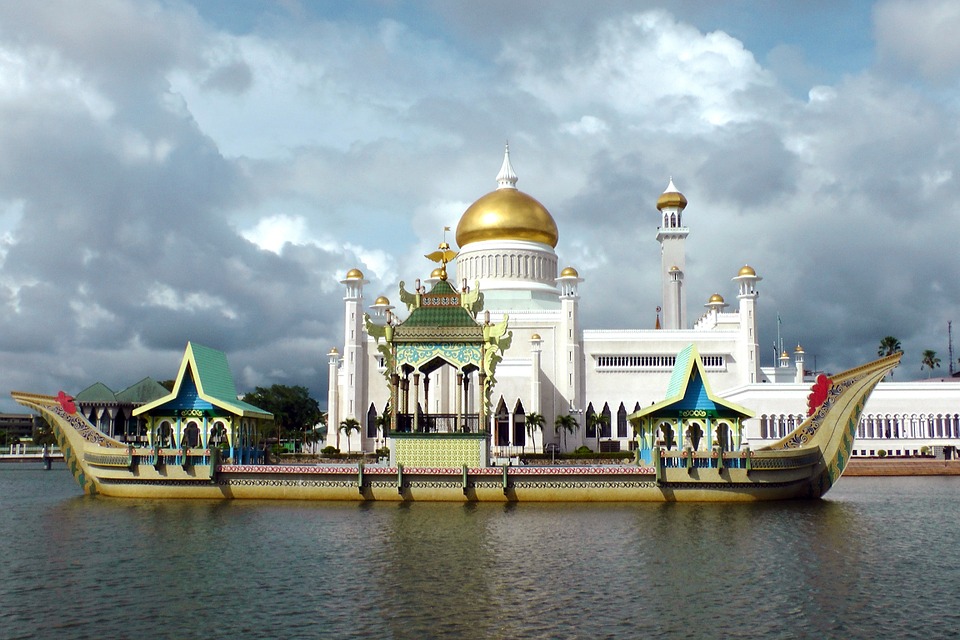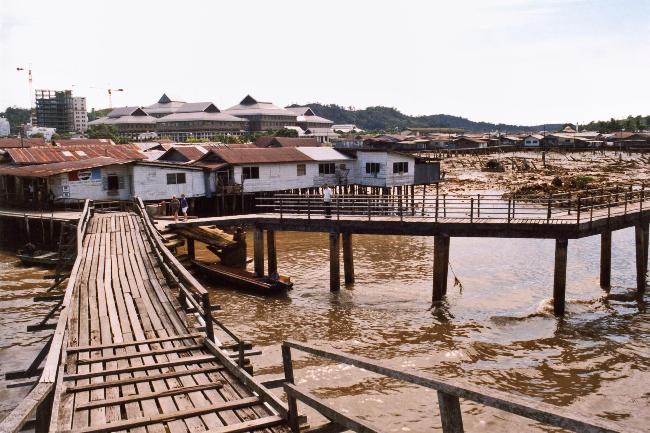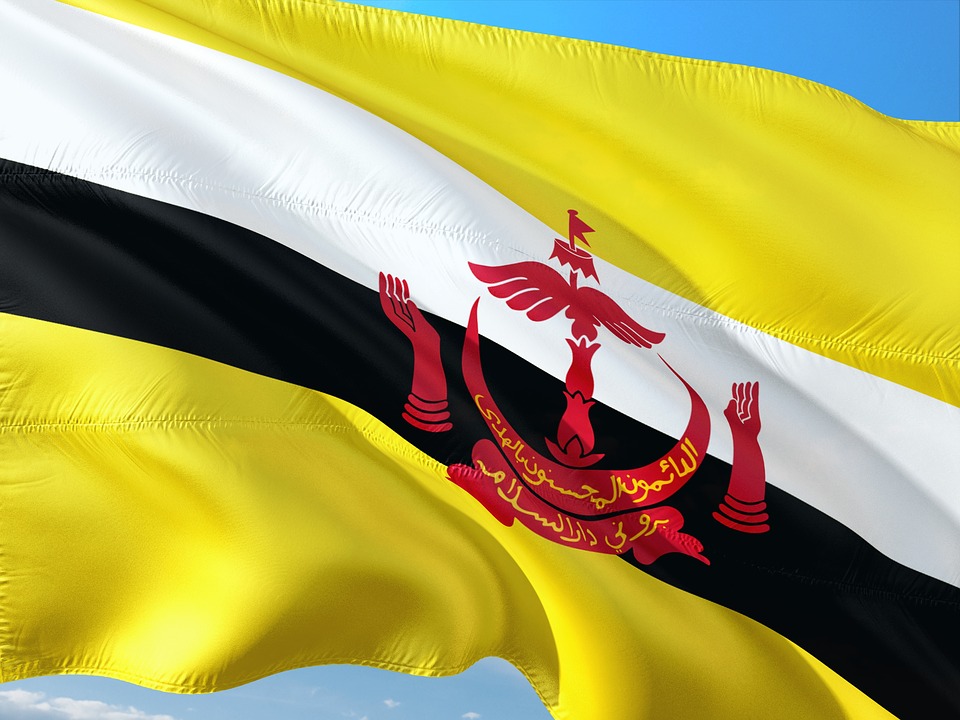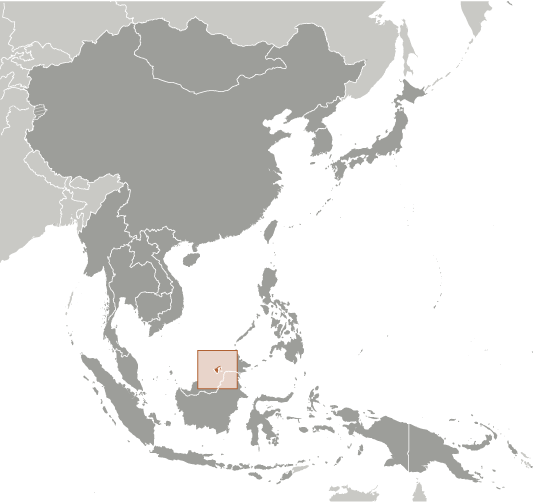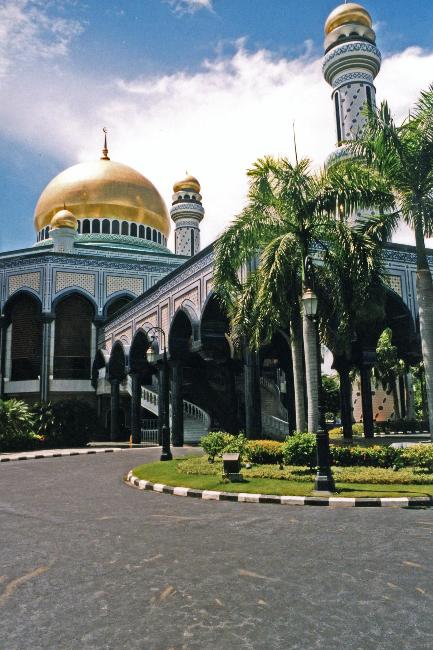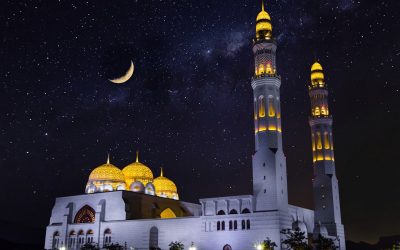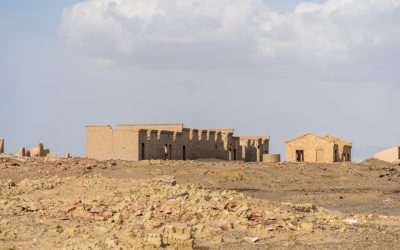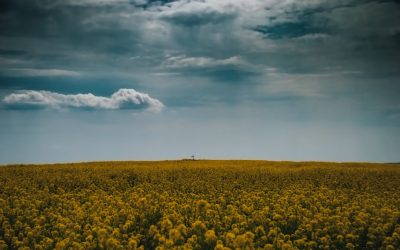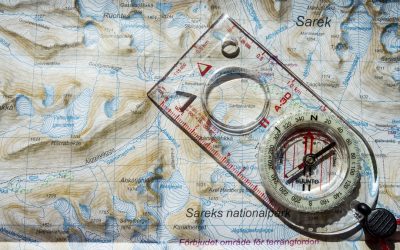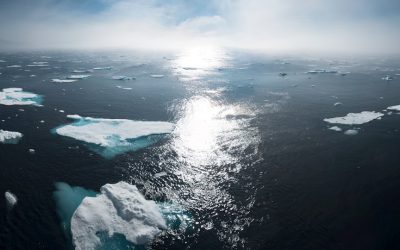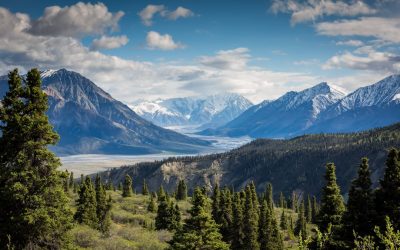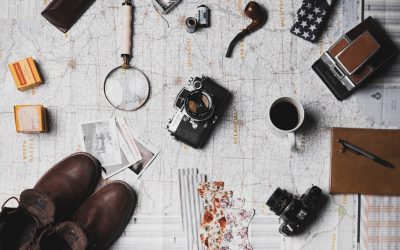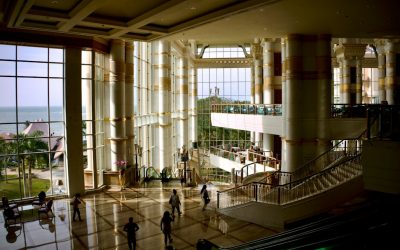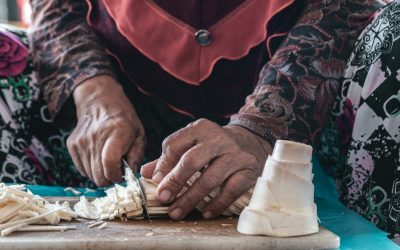Brunei
(Negara Brunei Darussalam (State of Brunei Darussalam))

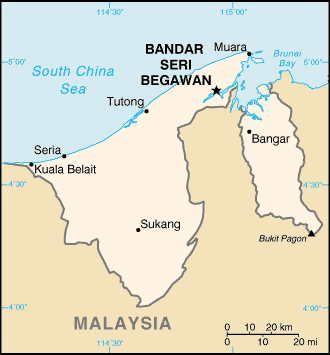
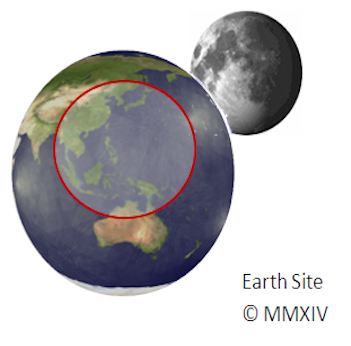
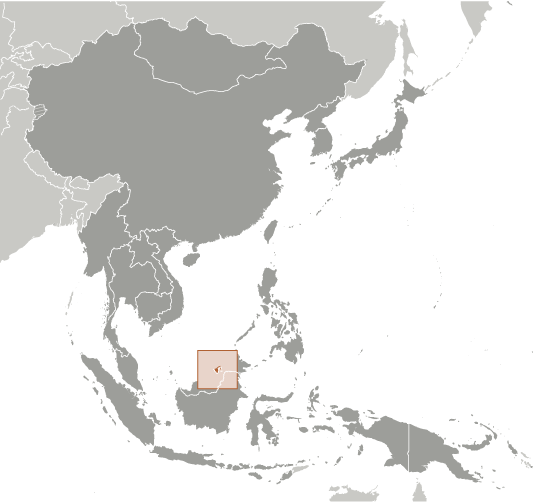
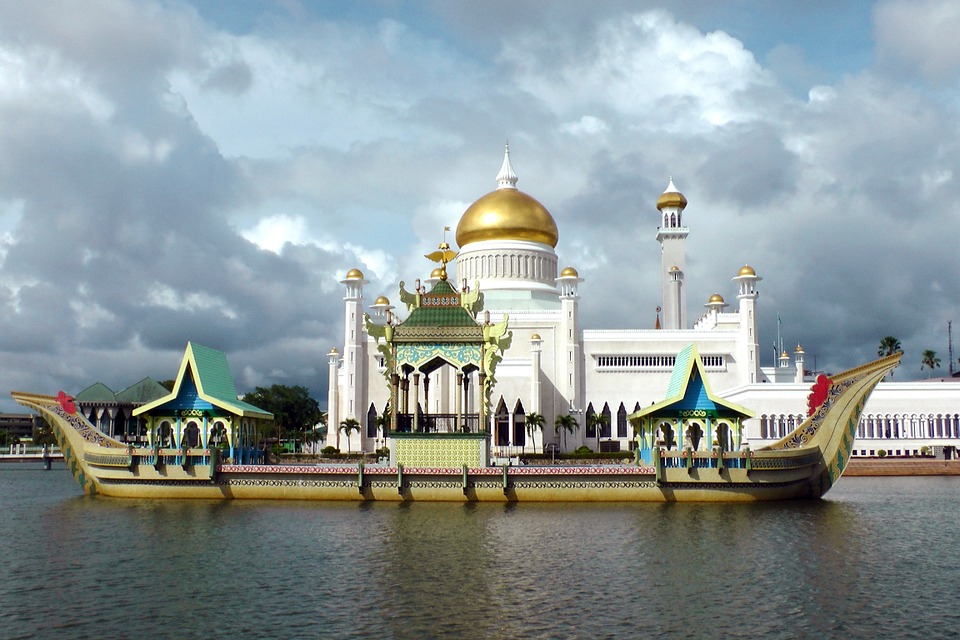
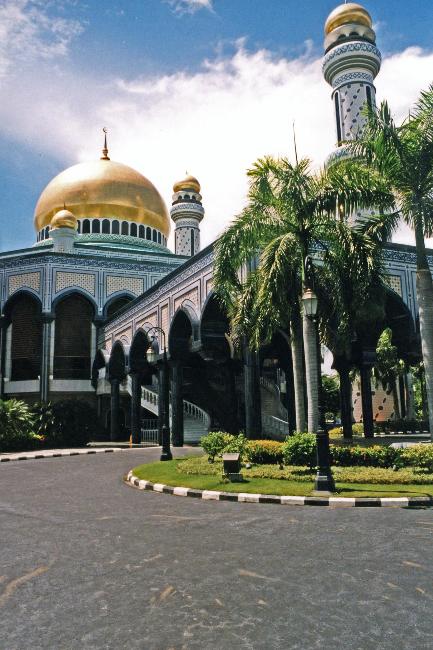
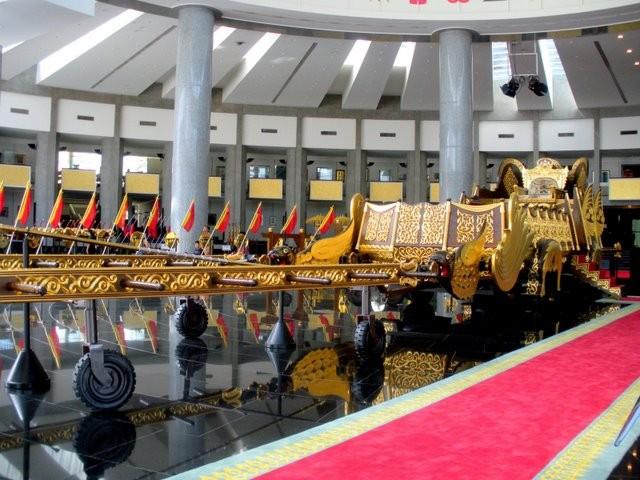
Capital of Brunei : Bandar Seri Begawan
Population (Estimated July 2012): 408,786
Area: 5,765 km2 or 2,226 mi2
Currency: Brunei dollar (B$)
Official Language: Malay
Political Information: Malay Islamic Monarchy
Official Religion: Muslim
(approximately 67% of the population are Muslim, 13% are Buddhist, 10% are Christian and 10% have other religious beliefs)
Highest Mountain: Bukit Pagon at 1,850m or 6,070ft
GDP Official Exchange Rate (OER is more precise at gauging a countries economic power)
(Estimated 2011): $15.6 billion (US$) or £9,360 million (GBP)
GDP (OER) Per Capita (per member of the population estimated 2011): (US$) or (GBP)
GDP Purchasing Power Parity (PPP is good for gauging living conditions and use of resources but not as accurate as OER. This data has been calculated based on the sum value of all goods and services produced in the country valued at prices prevailing in the United States)
(Estimated 2011): $21.11 billion (US$) or £12,666 million (GBP)
GDP (PPP) Per Capita (per member of the population estimated 2011): $49,400 (US$) or £29,640 (GBP)
Time Zone (GMT/UTC): +8:00
Counties/Provinces/States: (Districts) Belait, Brunei-Muara, Temburong, Tutong
Leaders: Sultan and the first Prime Minister Hassanal Bolkiah with the crown Prince Al-Muhtadee Billah. (since 5 October 1967)
Sources: CIA World Fact Book, Encyclopaedia Britannica.
Brunei, officially known as the Nation of Brunei, the Abode of Peace, is a small but prosperous country located on the island of Borneo in Southeast Asia. It is bordered by Malaysia and the South China Sea. Despite its small size, Brunei has a population of approximately 450,000 people.
Brunei is known for its high standard of living and strong economy. It has one of the highest GDP per capita in the world, largely due to its abundant reserves of oil and natural gas. The country’s wealth has allowed it to provide its citizens with free education, healthcare, and other social benefits. Brunei also boasts a low crime rate and a high level of safety, making it an attractive destination for both tourists and expatriates.
History of Brunei: A tale of a powerful empire and modern-day monarchy
Brunei has a rich history that dates back centuries. In the 15th and 16th centuries, Brunei was a powerful empire that controlled much of Borneo and parts of the Philippines. It was known for its strong navy and extensive trade networks. However, the empire began to decline in the 17th century due to internal conflicts and external pressures from European powers.
In the 19th century, Brunei came under British influence and became a protectorate of the British Empire. It remained under British control until 1984 when it gained full independence. Today, Brunei is a modern-day monarchy with Sultan Hassanal Bolkiah as its ruler. The Sultan has been in power since 1967 and is one of the world’s longest-reigning monarchs.
Geography of Brunei: A land of lush rainforests, pristine beaches and oil-rich waters
Brunei is blessed with diverse geography that includes lush rainforests, pristine beaches, and oil-rich waters. The country is covered in dense tropical rainforests, which are home to a wide variety of flora and fauna. These rainforests are protected by the government and are part of Brunei’s commitment to preserving its natural resources and biodiversity.
In addition to its rainforests, Brunei also has beautiful beaches along its coastline. The beaches are known for their clear blue waters and white sandy shores, making them popular destinations for both locals and tourists. The country’s offshore waters are also rich in oil and natural gas reserves, which have played a significant role in Brunei’s economy.
Culture and Traditions of Brunei: A fusion of Malay, Chinese and Islamic influences
Brunei’s culture is a unique fusion of Malay, Chinese, and Islamic influences. The majority of the population is Malay, and the Malay culture is deeply ingrained in Bruneian society. Traditional Malay customs and practices are still observed, such as the wearing of traditional clothing and the celebration of festivals like Hari Raya Aidilfitri.
Chinese culture also plays a significant role in Brunei, particularly in the areas of business and commerce. Many Chinese immigrants have settled in Brunei over the years, bringing with them their traditions and customs. Chinese festivals such as Chinese New Year are widely celebrated in the country.
Islam is the official religion of Brunei, and Islamic traditions are an integral part of Bruneian culture. The call to prayer can be heard throughout the day, and mosques are scattered across the country. Islamic values such as respect for elders and hospitality are deeply ingrained in Bruneian society.
Economy of Brunei: A thriving oil and gas industry and diversifying sectors
Brunei’s economy is heavily reliant on its oil and gas industry, which accounts for a significant portion of its GDP. The country is one of the largest exporters of liquefied natural gas (LNG) in the world. The revenue generated from the oil and gas sector has allowed Brunei to provide its citizens with a high standard of living and generous social benefits.
However, Brunei is aware of the need to diversify its economy and reduce its reliance on oil and gas. The government has been actively promoting entrepreneurship and innovation to stimulate economic growth in other sectors. Efforts have been made to develop industries such as tourism, agriculture, and information technology. Brunei is also exploring renewable energy sources to reduce its carbon footprint and promote sustainable development.
Education in Brunei: A focus on quality education and lifelong learning
Education is highly valued in Brunei, and the government has made significant investments in the education system. The country has a well-developed education system that provides free education from primary school to university level. The literacy rate in Brunei is close to 100%, reflecting the importance placed on education.
Brunei places a strong emphasis on quality education and lifelong learning. The curriculum is designed to provide students with a well-rounded education that includes academic subjects as well as moral and religious education. The government has also implemented initiatives to promote STEM (Science, Technology, Engineering, and Mathematics) education and digital literacy to prepare students for the future.
Tourism in Brunei: Exploring the country’s natural beauty and cultural heritage
Brunei may not be as well-known as its Southeast Asian neighbors when it comes to tourism, but it offers a unique travel experience for those who visit. The country is home to stunning natural attractions such as Ulu Temburong National Park, which is known for its pristine rainforests and diverse wildlife. The park offers activities such as canopy walks, river cruises, and jungle trekking.
Brunei also has a rich cultural heritage that can be explored through its historical sites and museums. The Royal Regalia Museum showcases the royal artefacts of the Sultan, while the Brunei Museum provides insights into the country’s history and culture. The Kampong Ayer, a water village built on stilts, is another popular tourist attraction that offers a glimpse into traditional Bruneian life.
The government of Brunei is actively promoting sustainable tourism and preserving its cultural heritage. Efforts have been made to develop eco-friendly tourism initiatives and promote responsible travel practices. The country’s commitment to preserving its natural resources and cultural heritage makes it an attractive destination for eco-conscious travellers.
Food and Cuisine in Brunei: A delectable mix of Malay, Chinese and Indian flavors
Brunei’s cuisine is a delightful fusion of Malay, Chinese, and Indian influences. The country’s diverse culinary scene offers a wide variety of dishes that cater to different tastes and preferences. Malay cuisine forms the foundation of Bruneian food, with dishes such as nasi lemak (coconut rice), rendang (spicy meat stew), and satay (grilled skewered meat) being popular choices.
Chinese cuisine also plays a significant role in Bruneian food culture, with dishes such as dim sum, noodles, and stir-fried vegetables being commonly enjoyed. Indian cuisine has also made its mark in Brunei, with dishes such as roti canai (Indian flatbread) and curry being popular choices.
One unique dish that is synonymous with Brunei is ambuyat. Ambuyat is made from the sago palm tree and has a sticky texture. It is typically eaten with a variety of side dishes such as grilled fish, vegetables, and sambal (spicy sauce). Another popular dish is nasi katok, which consists of rice topped with fried chicken and served with a spicy sauce.
Sports and Recreation in Brunei: A variety of outdoor activities and traditional games
Brunei offers a range of sports and recreational activities for both locals and visitors to enjoy. The country’s lush rainforests provide the perfect backdrop for outdoor activities such as hiking, jungle trekking, and bird-watching. The Ulu Temburong National Park is a popular destination for nature lovers and adventure enthusiasts.
Traditional games also play a significant role in Bruneian culture. One such game is sepak takraw, a traditional Malay sport that is similar to volleyball but played with a rattan ball. It requires agility, skill, and teamwork, and is often played during festivals and special occasions.
Brunei also has a strong focus on promoting sports and healthy lifestyles. The government has invested in sports facilities and infrastructure to encourage participation in sports at all levels. The country has hosted international sporting events such as the Southeast Asian Games and the Asian Youth Games, further showcasing its commitment to sports development.
Future of Brunei: Challenges and opportunities for sustainable development and growth
While Brunei has enjoyed economic prosperity due to its oil and gas reserves, it faces challenges in ensuring sustainable development and growth in the future. The country’s heavy reliance on oil and gas makes it vulnerable to fluctuations in global energy prices. There is a need for diversification of the economy to reduce this dependence.
Brunei has recognized the need for diversification and has been actively promoting entrepreneurship and innovation. The government has implemented initiatives to support startups and small businesses, providing them with access to funding, mentorship, and resources. The country’s strategic location in Southeast Asia also presents opportunities for trade and investment.
In addition to economic challenges, Brunei also faces environmental challenges such as deforestation and climate change. The government has taken steps to protect its natural resources and biodiversity through the establishment of protected areas and conservation efforts. Brunei’s commitment to sustainable development and its focus on entrepreneurship and innovation position it well for future growth and prosperity.
Cultural or Historical Sites of Brunei: Important Cultural Landmarks or Historical Sites In Brunei
Introduction Brunei, a small Southeast Asian nation on the island of Borneo, is known for its rich history and vibrant culture. With a history dating back to the 7th century, Brunei has a wealth of heritage that deserves to be preserved and showcased. From its royal regalia to its Islamic identity, Brunei’s cultural landmarks are a testament to its past and a source of pride for its people. In this article, we will explore some of the most significant cultural landmarks in Brunei and discuss the importance of preserving and showcasing them. The Royal Regalia Museum: A Showcase of Brunei’s Rich Heritage The Royal Regalia Museum in Brunei is a testament to the country’s rich royal heritage. Established in 1992, the museum houses a collection of royal regalia, including the crown jewels, ceremonial attire, and gifts received by the Sultan of Brunei. The museum provides visitors with a glimpse into the opulent world of Brunei’s monarchy and showcases the country’s cultural traditions. One of the highlights of the museum is the Sultan’s throne room, where visitors can see the intricately designed golden throne used during official ceremonies. The museum also features exhibits on Brunei’s history, including displays on the country’s oil industry and its role in international diplomacy. The Royal Regalia Museum plays an important role in preserving Brunei’s royal heritage. By showcasing the regalia and artifacts associated with the monarchy, the museum helps to educate both locals and tourists about Brunei’s rich history and cultural traditions. It also serves as a source of national pride for Bruneians, reminding them of their country’s royal legacy. The Omar Ali Saifuddien...
Natural Resources of Brunei: Where Natural Resources are located In Brunei Darussalam
Natural Resources of Brunei Darussalam: Fueling the Economy of Brunei Brunei, officially known as the Nation of Brunei, the Abode of Peace, is a small country located on the island of Borneo in Southeast Asia. It is bordered by Malaysia and the South China Sea. Despite its small size, Brunei is blessed with abundant natural resources that have played a significant role in shaping its economy and development. Brunei Darussalam is a small but wealthy country on the island of Borneo, best known for its abundant natural resources, especially oil and gas. Despite its modest size, Brunei wields considerable economic power thanks to its vast reserves of petroleum and natural gas. In this article, we explore the full spectrum of the resources of Brunei, diving deep into its energy dominance, rich biodiversity, and emerging opportunities for sustainable development. Whether you’re curious about Brunei’s natural gas, its GDP, or its future prospects beyond fossil fuels, this comprehensive guide is packed with valuable insights. Summary Brunei has a variety of natural resources including oil and gas, forests, minerals, fisheries, agriculture, water, and renewable energy. Oil and gas reserves are the most significant natural resource in Brunei, accounting for the majority of the country’s GDP and exports. Brunei’s forests are also important, covering over 70% of the country’s land area and providing valuable ecosystem services. Mineral resources in Brunei are limited, but include deposits of gold, copper, and other metals. Fisheries and aquatic resources are important for both subsistence and commercial purposes, with a variety of fish and shellfish species found in Brunei’s waters. Oil and Gas Reserves in Brunei One of the...
Natural Resources of Brunei: Where Natural Resources are located In Brunei
Brunei, officially known as the Nation of Brunei, the Abode of Peace, is a small country located on the island of Borneo in Southeast Asia. It is bordered by Malaysia and the South China Sea. Despite its small size, Brunei is blessed with abundant natural resources that have played a significant role in shaping its economy and development. Summary Brunei has a variety of natural resources including oil and gas, timber and forest, mining and minerals, agriculture, fisheries and aquatic, biodiversity and wildlife, renewable energy, and land and water resources. Brunei’s oil and gas reserves are the main source of revenue for the country and have been exploited since the 1920s. Timber and forest resources in Brunei are managed sustainably, with strict regulations in place to protect the environment and biodiversity. Brunei has significant mineral resources, including gold, copper, and iron, but mining activities are limited due to environmental concerns. Agriculture is an important sector in Brunei, with rice, fruits, and vegetables being the main crops grown. The country also has a thriving aquaculture industry. Oil and Gas Reserves in Brunei One of the most significant natural resources in Brunei is its vast reserves of oil and gas. Brunei has been producing oil since 1929 and is currently the ninth-largest producer of oil in Southeast Asia. The country’s oil reserves are estimated to be around 1.1 billion barrels, making it one of the wealthiest nations in the world per capita. The importance of oil and gas to Brunei’s economy cannot be overstated. Oil and gas exports account for more than 90% of Brunei’s total exports and contribute significantly to...
Political Boundaries of Brunei: Provinces, Districts, or Historical Boundaries.
Brunei, officially known as the Nation of Brunei, the Abode of Peace, is a small sovereign state located on the island of Borneo in Southeast Asia. It is bordered by the South China Sea to the north and shares land borders with Malaysia. Brunei has a unique political system, with an absolute monarchy and a Sultan as its head of state. The country is divided into several administrative divisions, including provinces and districts, which play a crucial role in its governance. Summary Brunei’s political boundaries have evolved over time, with historical, administrative, provincial, and district divisions. Districts play a crucial role in Brunei’s governance, with each district having its own district office and officer. Provincial boundaries are significant in Brunei, as they determine the allocation of resources and development projects. Colonialism has had a lasting impact on Brunei’s political boundaries, with the country being divided into British protectorates in the 19th century. Understanding Brunei’s political boundaries is important for navigating the country’s governance and history. Historical Boundaries of Brunei Brunei has a rich history that dates back centuries. In the past, Brunei’s territory extended beyond its current borders and included parts of present-day Malaysia and the Philippines. However, over time, Brunei lost much of its territory due to territorial disputes with neighbouring countries. One of the most significant territorial disputes involving Brunei is the dispute with Malaysia over the ownership of the island of Borneo. Both countries claim sovereignty over certain parts of the island, leading to tensions and occasional conflicts. The dispute remains unresolved to this day. Administrative Divisions of Brunei Brunei is divided into four administrative divisions:...
Climate Zones of Brunei: Different climate regions Of Brunei
Brunei, a small country located on the island of Borneo in Southeast Asia, is known for its rich biodiversity and diverse climate zones. The country’s geography is characterized by dense rainforests, mountain ranges, and coastal areas. Brunei experiences a tropical climate with high humidity and temperatures throughout the year. Understanding Brunei’s climate zones is crucial for various reasons, including conservation efforts, tourism planning, and mitigating the effects of climate change. Summary Brunei has a diverse range of climate zones, including tropical rainforest, tropical monsoon, equatorial, subtropical highland, semi-arid, arid, Mediterranean, and polar. The tropical rainforest climate zone in Brunei is characterized by high temperatures, high humidity, and heavy rainfall throughout the year. The tropical monsoon climate zone in Brunei experiences distinct wet and dry seasons, with heavy rainfall during the wet season and lower temperatures during the dry season. The equatorial climate zone in Brunei has high temperatures and rainfall throughout the year, with no distinct dry season. The subtropical highland climate zone in Brunei has cooler temperatures and lower humidity, with distinct seasons and occasional frost. Climate change is affecting Brunei’s climate zones, with rising temperatures and changing rainfall patterns posing a threat to the country’s ecosystems and economy. The Tropical Rainforest Climate Zone in Brunei One of the prominent climate zones in Brunei is the tropical rainforest climate zone. This zone is characterized by high temperatures, heavy rainfall, and high humidity throughout the year. The average annual rainfall in this zone can exceed 3,000 millimeters. The rainforests in this climate zone are home to a wide variety of flora and fauna. Some examples of flora found in...
Terrain and Topography of Brunei: mountains, valleys, and plains.
Brunei, a small sovereign state located on the island of Borneo in Southeast Asia, is known for its diverse and unique terrain and topography. The country is characterized by its mountain ranges, valleys, plains, rivers, waterways, and coastal areas. Understanding the geography of Brunei is crucial for various reasons, including environmental conservation, sustainable development, and disaster management. Summary Brunei’s terrain and topography are diverse and varied, with mountain ranges, valleys, plains, coastal areas, and waterways. The mountain ranges of Brunei are home to unique flora and fauna, and offer opportunities for hiking and exploration. The valleys of Brunei are characterized by their lush vegetation and winding rivers, and are important for agriculture and biodiversity. The plains of Brunei are home to important ecosystems, including mangroves and peat swamps, and are vulnerable to climate change and human activity. Climate plays a significant role in shaping Brunei’s terrain and topography, with heavy rainfall and tropical storms affecting the landscape. The Mountain Ranges of Brunei: A Closer Look Brunei is home to several mountain ranges, including the Bukit Pagon Range, the Temburong Range, and the Belait Range. These mountain ranges are characterized by their steep slopes, dense forests, and rich biodiversity. The highest peak in Brunei is Bukit Pagon, which stands at an impressive 1,850 meters above sea level. The mountain ranges of Brunei play a vital role in the country’s ecosystem. They act as a natural barrier, protecting the inland areas from strong winds and storms. The dense forests on the slopes of these mountains are home to a wide variety of plant and animal species, many of which are endemic...
History of Brunei
Brunei, officially known as the Nation of Brunei, the Abode of Peace, is a small country located on the island of Borneo in Southeast Asia. Despite its small size, Brunei has a rich and fascinating history that spans over centuries. Understanding Brunei’s history is important as it provides insights into the country’s cultural heritage, political system, and economic development. This article aims to provide a comprehensive overview of Brunei’s history, from its early settlements to its present-day status as an oil-rich nation. Summary Brunei’s early history dates back to the 7th century and lasted until the 15th century. Islam arrived in Brunei during the 15th century and lasted until the 17th century. Brunei’s golden age occurred during the 16th century and lasted until the 18th century. European powers arrived in Brunei during the 16th century and lasted until the 19th century. British influence in Brunei occurred during the 19th century and lasted until the early 20th century. Brunei’s Early History: From the 7th Century to the 15th Century Brunei’s early history can be traced back to the 7th century when it was inhabited by indigenous tribes. These early settlements were influenced by Hinduism and Buddhism, which were brought to the region through trade with India and other Southeast Asian countries. The influence of these religions can still be seen in Brunei’s architecture and cultural practices. During this period, Brunei also engaged in trade with China and other Southeast Asian countries. The strategic location of Brunei on the maritime trade routes made it an important trading hub. The people of Brunei traded goods such as spices, gold, and ceramics, which...
Population Density of Brunei
Brunei, officially known as the Nation of Brunei, the Abode of Peace, is a small sovereign state located on the island of Borneo in Southeast Asia. It is bordered by Malaysia and the South China Sea. With a total land area of approximately 5,765 square kilometers, Brunei is one of the smallest countries in the world. Despite its small size, Brunei has a relatively large population compared to its land area. Population density refers to the number of people living in a specific area, usually measured per square kilometer. It is an important indicator of how crowded or sparsely populated an area is. Understanding population density is crucial for policymakers and urban planners as it helps them make informed decisions about resource allocation, infrastructure development, and social services provision. Summary Brunei has a small population of approximately 460,000 people. Population density is the number of people living in a specific area, usually measured in square kilometres. Urban areas in Brunei have a higher population density than rural areas. Factors affecting population density in Brunei include economic opportunities, infrastructure, and government policies. Managing population density is crucial for sustainable development in Brunei. Understanding Population Density and its Importance Population density is calculated by dividing the total population of an area by its land area. It provides valuable insights into how people are distributed across a given territory. High population density indicates that there are many people living in a small area, while low population density suggests that there are fewer people spread out over a larger area. Population density plays a significant role in various aspects of life. It affects...
Discovering the Hidden Gems of Brunei: A Journey Through Southeast Asia’s Best Kept Secret
Brunei, a small country located on the island of Borneo in Southeast Asia, is often overlooked by travelers in favor of its more popular neighbors like Malaysia and Indonesia. However, this hidden gem has much to offer visitors who are willing to venture off the beaten path. With its rich cultural heritage, stunning natural wonders, and warm hospitality, Brunei is a destination that should not be missed. Brunei’s history dates back to the 7th century when it was ruled by various indigenous tribes. In the 15th century, Brunei became a powerful sultanate and controlled much of Borneo and parts of the Philippines. Today, Brunei is a constitutional monarchy with Sultan Hassanal Bolkiah as its ruler. Despite its small size, Brunei is one of the wealthiest countries in the world due to its vast reserves of oil and natural gas. One of the reasons why Brunei is often overlooked by travelers is its lack of mass tourism infrastructure. Unlike its neighboring countries, Brunei does not have a bustling backpacker scene or an abundance of luxury resorts. However, this is part of what makes Brunei unique and worth visiting. The country offers a more authentic and untouched experience, allowing visitors to immerse themselves in its rich culture and natural beauty. Key Takeaways Brunei is a hidden gem in Southeast Asia, with rich cultural heritage and stunning natural wonders. Off-the-beaten-path adventures await in Brunei, with unique cuisine and local delicacies to indulge in. Must-see sights and experiences in Brunei include navigating bustling cities and quaint villages. The friendly people of Brunei offer a warm welcome and a chance to understand Islamic traditions...
